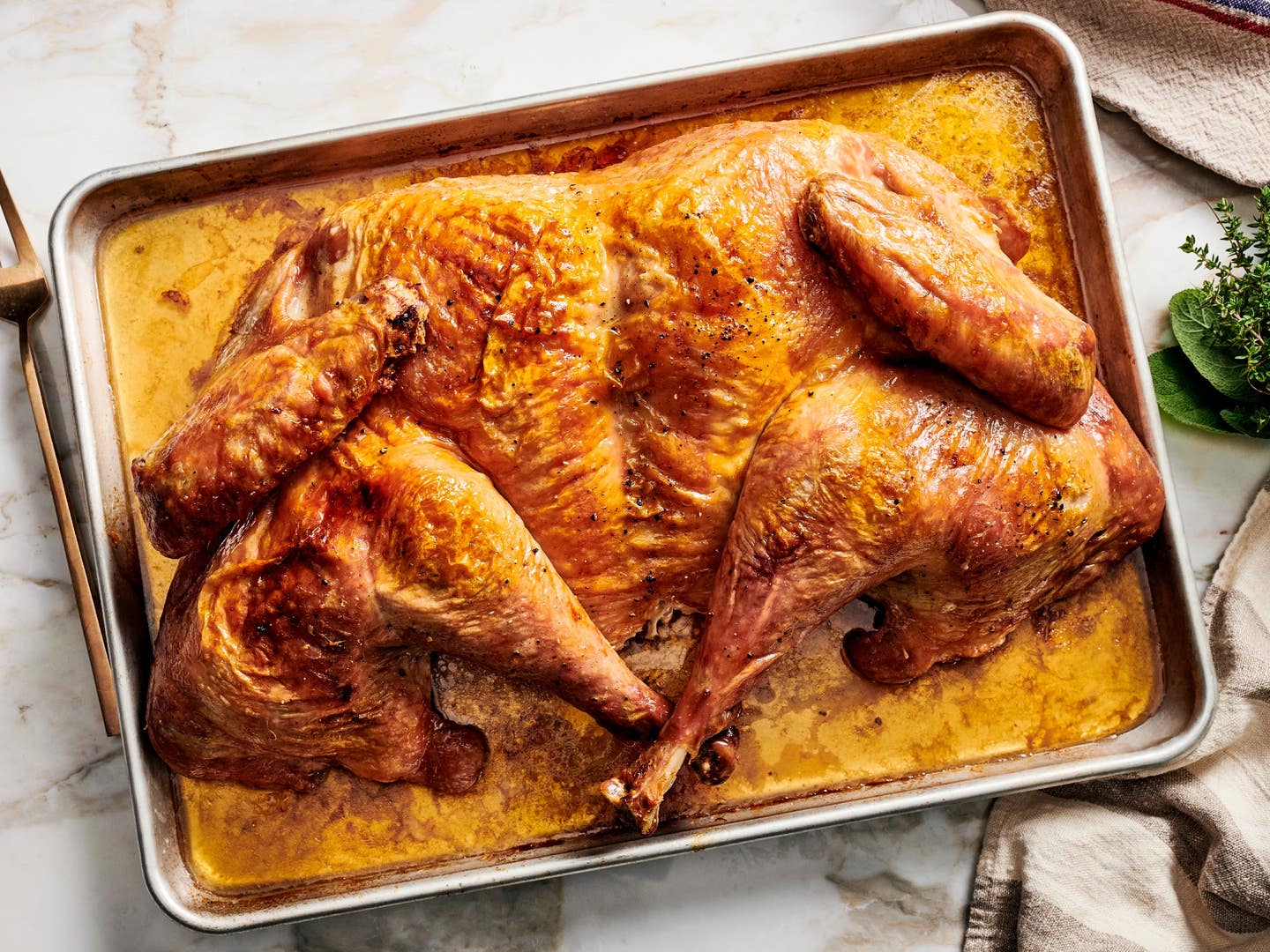
Get That Bird on the Table Faster (and More Evenly Cooked) With This Time-Saving Technique
Our local butcher breaks down how to spatchcock a turkey.
This holiday season, millions of Americans will wonder if their turkey needs to cook for just two hours like last year, or if they’ll have to plan their meal around five hours of oven time, as was required the year before. Turkeys are giant birds, and most home ovens are relatively small. This results in limited airflow and makes the timing of these large holiday roasts an intricate and unpredictable affair. That’s where spatchcocking comes in. The technique makes roasting a whole turkey quicker and more consistent, generally yielding juicer, far more tender meat.
“The idea with spatchcocking is to simplify the process,” says Jake Dickson, founder of Dickson’s Farmstand Meats in Manhattan’s Chelsea Market—SAVEUR’s go-to butcher shop for recipe testing and photo shoots. Removing the bird’s backbone to open the body neutralizes any complications caused by the turkey’s irregular shape. “From something round with an empty cavity,” Dickson describes, “You’re creating a flat, mostly uniform surface to cook.”
Spatchcocking allows the cook to serve a showy whole-bird centerpiece while eliminating a lot of the guesswork. “By decreasing the amount of time required to cook a turkey,” the butcher tells us, “you can go hotter and faster, and keep the meat a bit juicier, too.”
How to Spatchcock a Turkey
Get Your Equipment and Bird Set Up
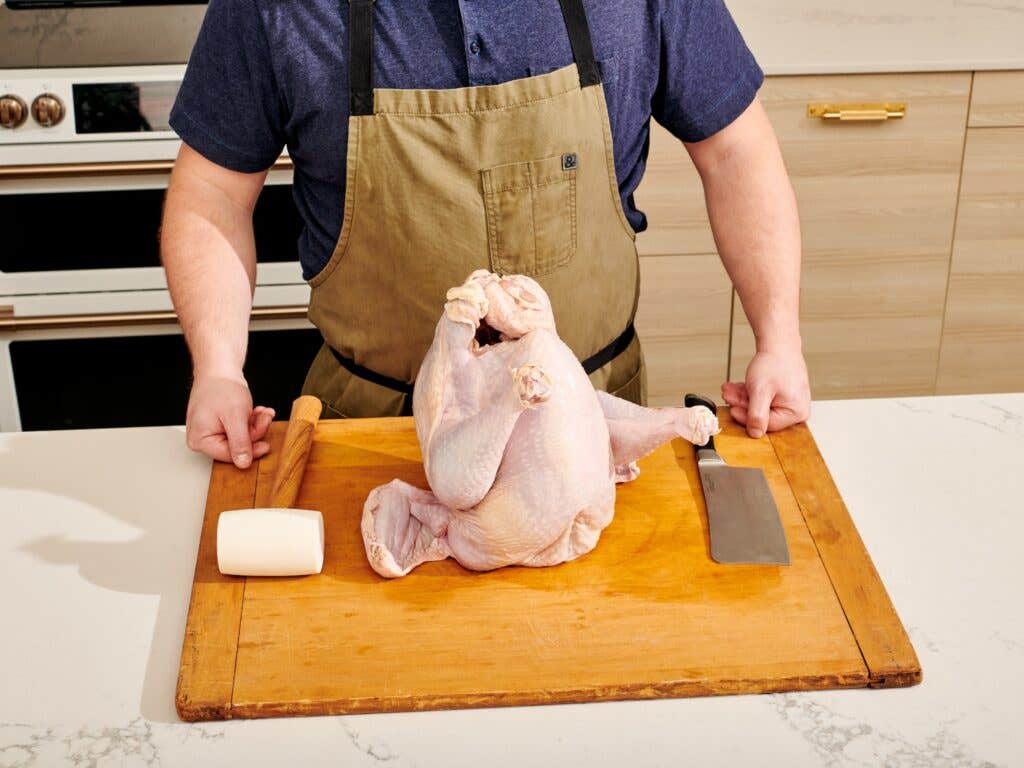
The larger the bird, the harder the bones, so, when it comes to butchering a turkey, you’ll need a fair amount of power. The typical spatchcocking technique requires a fair amount of skill and a special knife designed specifically for cutting through the sturdy rib cage—hardly useful for the average home cook. Instead, Dickson offers his easy, foolproof method using a simple rubber mallet from the hardware store and an inexpensive cleaver.
Instead of attempting to precisely adjust a knife or swing the cleaver itself, this tactic allows the user to carefully place the edge of the blade where they intend to cut, then swing the safer, more manageable mallet down to push through the ribs.
Once you have all the equipment, position your bird upright on a large cutting board with its legs pointing upwards.
Cut Down the Backbone
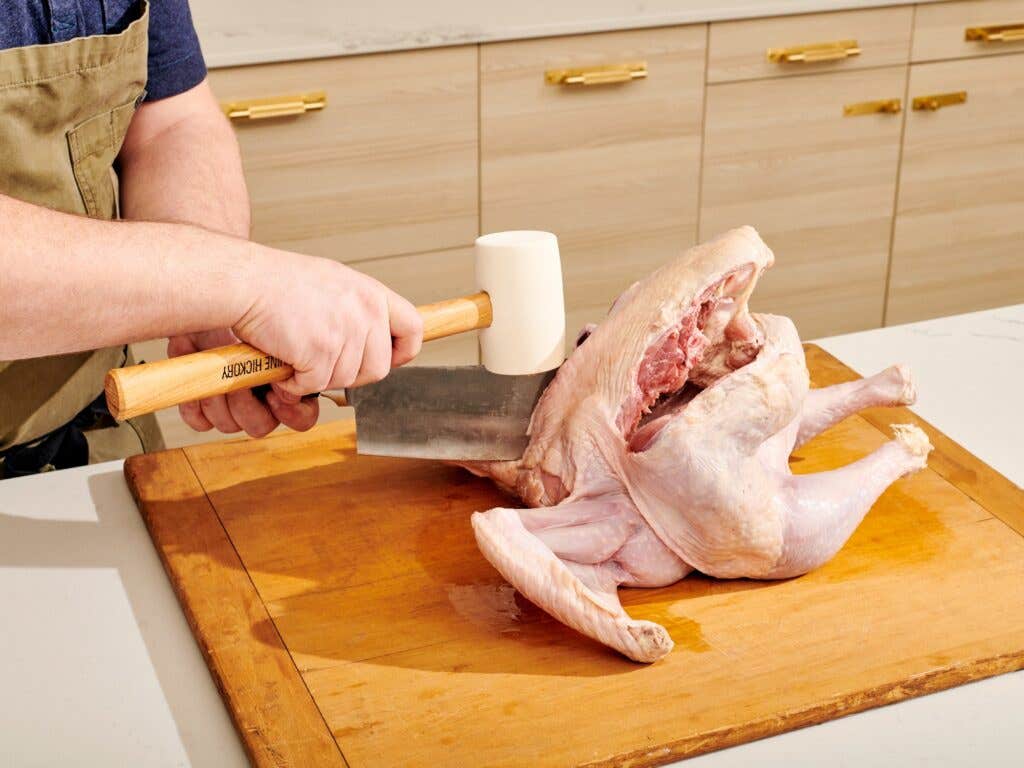
With the bird standing upright, insert the cleaver, “starting right to one side of where the tail meets the rest of the carcass,” says Dickson. Swing the mallet to hit the back of the cleaver, pushing the blade through to cut down along the backbone, using “little whacks” until you have broken through to the cavity.
Repeat this process on the second side. “Once you do the first side, the bird’s structure is no longer intact,” the butcher explains, so you will need to steady it to make the second cut. “But it’s totally doable,” he says. If you have any skin or meat still connected, Dickson recommends using a sharp paring knife to finish the job: remove the backbone entirely and reserve it for stock.
Break the Breastbone
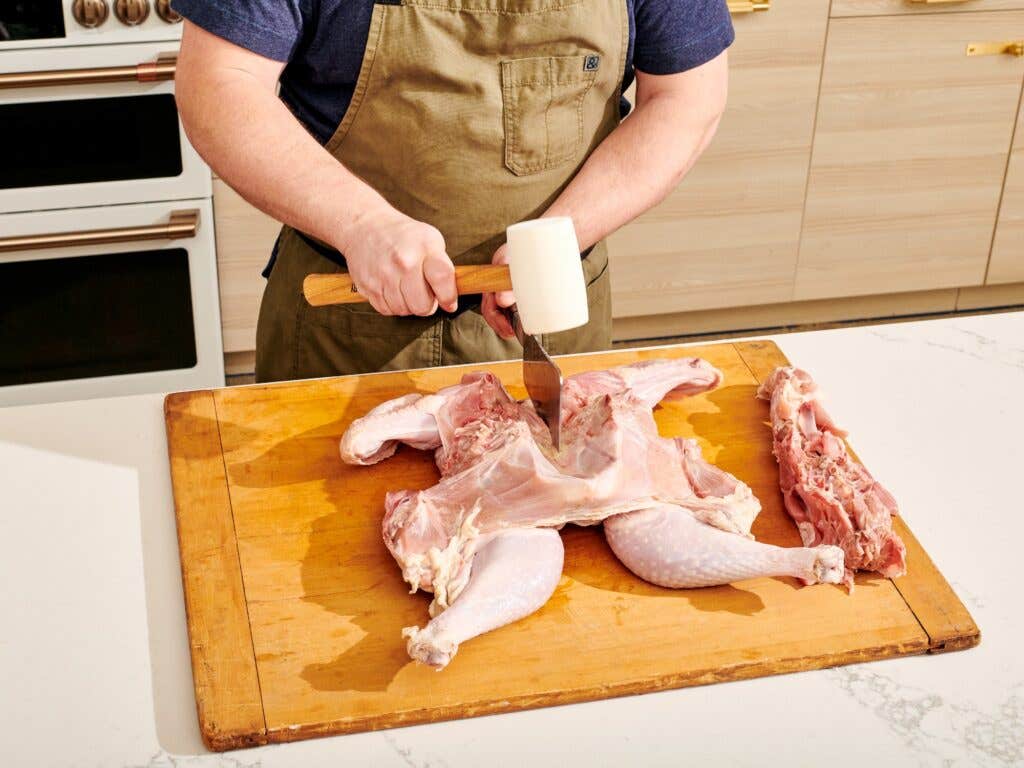
At this point, the hardest part of the job is finished! So you can relax. You basically have an open cavity in the bird with the backbone removed or opened up, giving you direct access to the breastbone, which remains the last obstacle between you and a fully spatchcocked turkey.
Set the edge of the cleaver on the exposed breastbone, instructs Dickson, “And give it a couple quick whacks with the mallet to split that bone in half.” (Don’t cut all the way through the meat.) This will make it far easier to flatten the turkey.
Flatten the Turkey
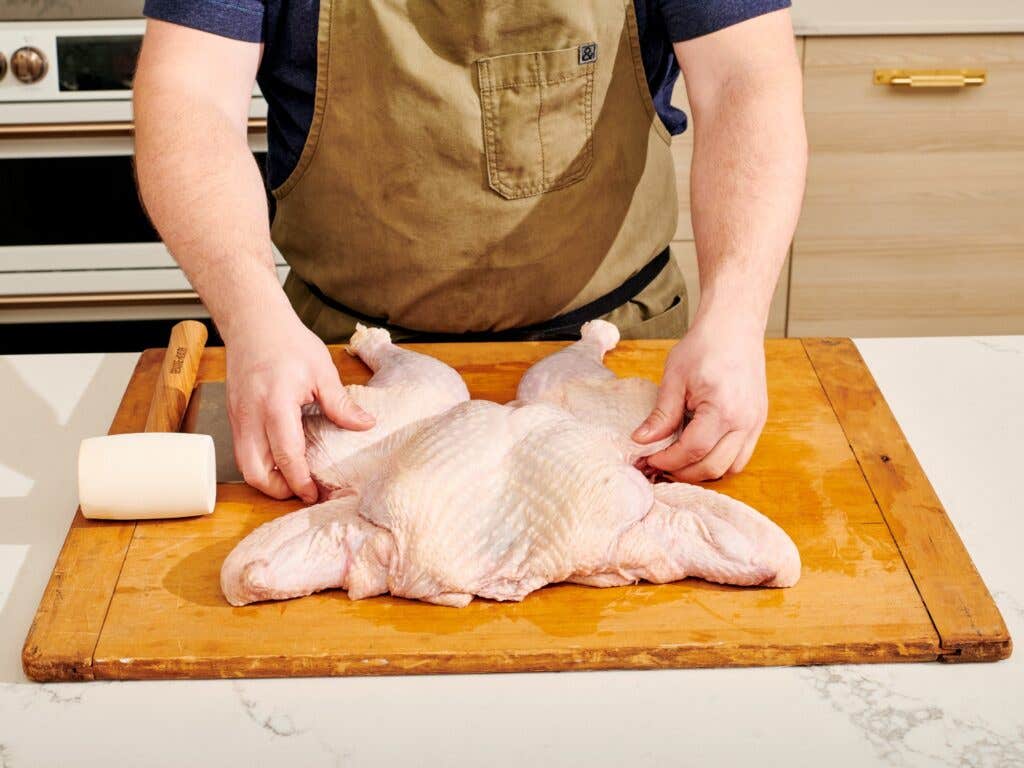
With the breastbone gone, you should be able to simply flip the bird over and press down to flatten it. If you have a large oven, you are all set to prepare it for cooking.
If you have a small oven, you have now doubled the width of your turkey, so may run into a space issue; feel free to halve the bird through the breast and cook it on two separate baking sheets.
How Long to Cook a Spatchcock Turkey
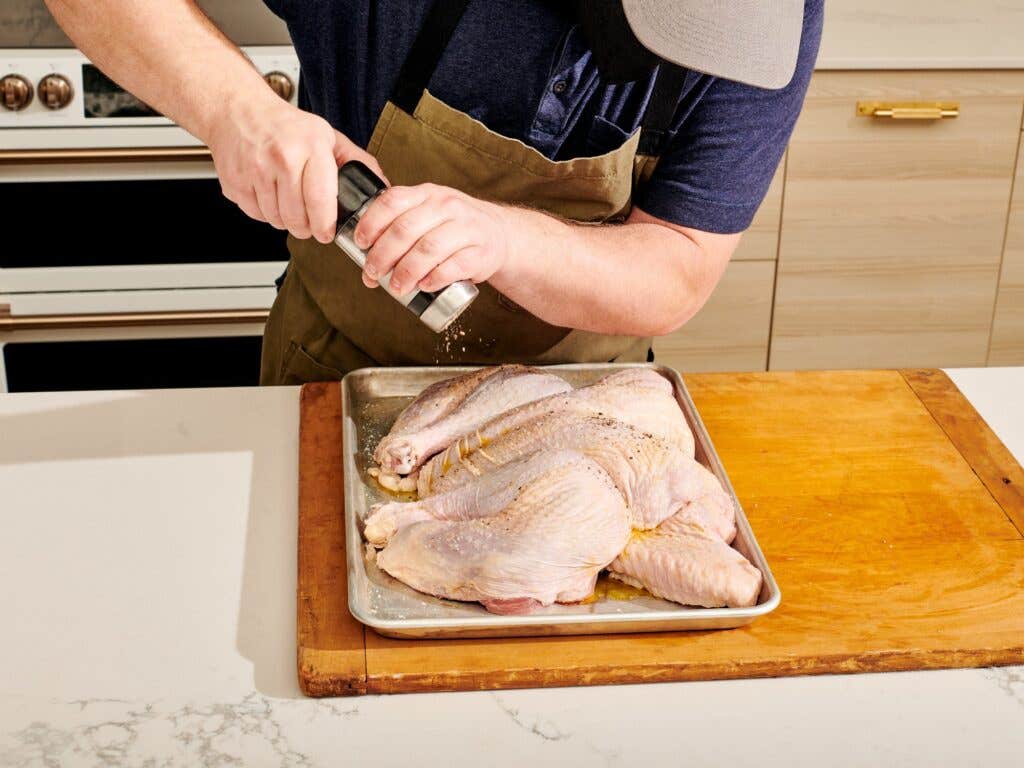
When asked how to cook a spatchcock turkey, Dickson explains that temperature is key: “I go hotter and faster than I would otherwise,” he says. The oven can stay hot throughout the cooking process—a consistent 375 to 400 degrees Fahrenheit— because the butchering method allows the heat to reach every part of the bird more evenly.
Dickson advises against any overcomplicated preparations for a spatchcocked turkey: “I try not to put too many fresh herbs on the skin, because I worry that they’ll burn.” Instead, he seasons the meat with a simple trio of salt, pepper, and olive oil, then roasts the bird for about 12 minutes per pound.
But as with any recipe, don’t rely on timers alone: Use an instant-read meat thermometer to check the internal temperature of your spatchcock turkey often—you’re aiming for 165 degrees Fahrenheit—before pulling it from the oven. (The residual heat will continue to bring the temperature of the meat up, so to avoid dry and overcooked white meat, don’t go past this point).
If the skin starts to brown too much before the meat is fully cooked, tent the darkest spots loosely with foil.
Recipes
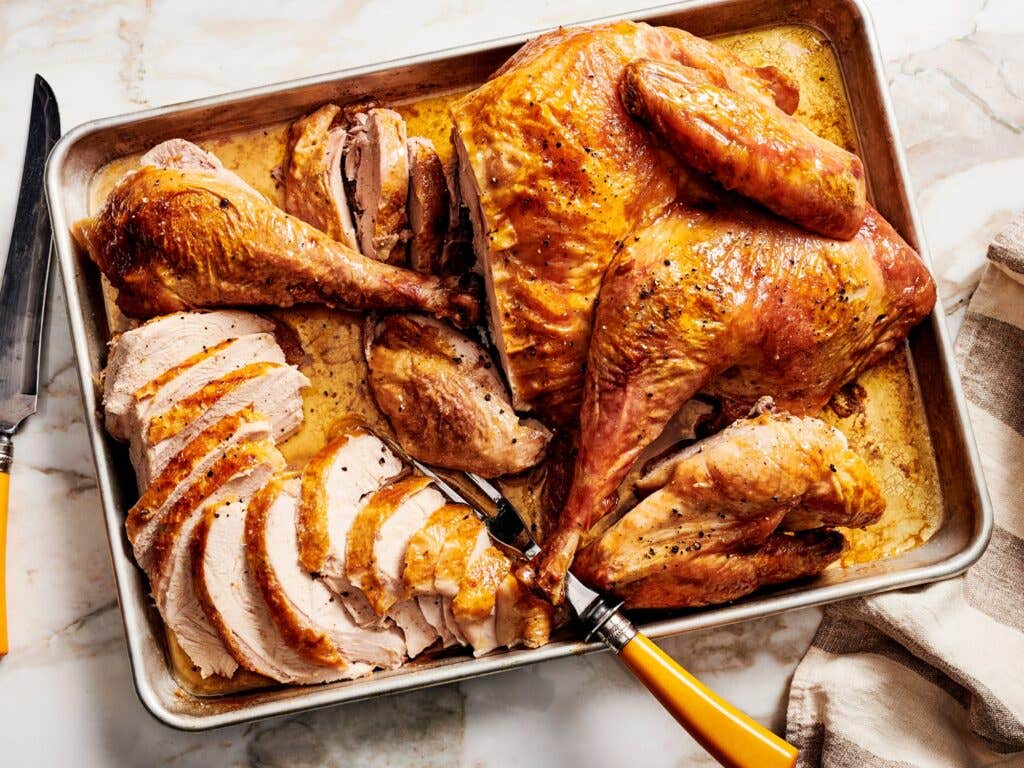
Keep Reading
Continue to Next Story










